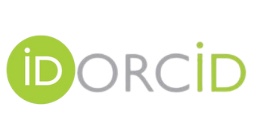Síndrome frágil X
Keywords:
ADN, ARN, mutaciónAbstract
Se realiza una revisión actualizada sobre las peculiaridades clínicas fenotípicas, citogenéticas, diagnosticas y de pesquisaje del Síndrome frágil X o de Martín Bell, una de las enfermedades monogénicas mas frecuentes en el ser humano y causa más común de retraso mental ligado al cromosoma X caracterizándose clínicamente por retraso mental, macroorquidea, orejas grandes, prognatismo y lenguaje “sui géneris”. En este trastorno se observa la presencia del sitio frágil en el brazo largo del cromosoma X (Xq 27.3). El diagnóstico positivo se realiza a través de las manifestaciones clínicas, estudios moleculares, citogenéticos e inmunohistoquìmicos. El diagnóstico precoz permite brindar consejo genético a los padres y familiares.
Downloads
References
Borbolla Vacher L. Pediatría 4: genética médica. Ciudad de la Habana: Pueblo y Educación; 1999.
SchapiroMB, Murphy Daclan GM, Hagerman RD. Adult fragile x syndrome:
neurophychology, brain anatomy and metabolism. American Journal of Medical Genetics. 1995; 60: 480-83.
Scriver A. The metabolic and molecular bases of inherted disease. 7 ed. 1995;Vol. 1.
Holden J, Wing M, Chalifoux M. Lock of expansion of triplete repeats in the FMR1, FRAX E and FRAX F loci in male multiplex families with autism and pervasive deulopmental disorders. American Journal of Medical Genetics. 1996; 64: 399-403.
Mckusick V. Mendelian inheritence in man. 11 ed. New York:The JohnHopkinsUniversity Press; 1994.
Nelson WE, Behrman RE, Kliegman M, and Arvin AM. Text book of Pediatrics. 15 ed. New York: W. B. Saunders; 1996.
Penchaszadell V. Genética, individuo y sociedad: un desafío para la medicina social. BolOficSanitPanam 1995; 118 (3): 254-63.
Vogel F, Motulsky AG. Human genetics. Problems and approaches. 3 ed. Berlin: Springer; 1997.
Brown WT, Nolin S, Houck G. Prenatal diagnosis and carrier screening for fragile x by P.C. R. American Journal of Medical Genetics. 1995; 64: 191-95
Nolin SL, Lewis FA, Ye LL. Familial transmission of the FMR1 C.G.G repeat. American Journal Human Genetics. 1996; 59 : 1252-61.
Jones KL. Smith’s recognizable patterns of human malformation. 5 ed. New York: W. B. Saunders; 1997.
McClatchey KD. Clinical laboratory medicine. New York: William and Wilkins; 1994.
Lubs HA. A marker x chromosome. Am J Hum Genet 1969; 21: 231.
Sutherland GR. Fragile sites on human chromosomes: demostration of their dependenes on the tipe of tissue culture medium. Science. 1997; 197: 265.
Oberte J, Rousseau F, Heitz D. Instability of a 550 base pain DNA segment and abnormal methylation in fragile x syndrome. Science. 1997; 198: 126.
Brown WT, Houck G, Xiaova J. Reverse mutations in the fragile x syndrome. An J Med Genet 1996; 64: 287-92
Sutherland GR, Baker E. Characterization of a new rare fragile site easily confused with the fragile x. Hum Mol Genet 1992; 1: : 111-13.
Hirst MC, Barnicoat A, Flynn G. The identification of a third fragile site: FRAX E in xq 2728. Hum Mel Genet 1993; 2: 197-200.
Kninght SJ, Voelckel MA, Hirst MC. Triplet repeat expansion at the FRAX E locus x linked mild mental handicap. Am J Hum Genet 1994; 55: 81-86.
Mulley JC, Yu S, Loesch D.L. FRAX E and mental Retardation. J Med Genet. 1995; 32: 162- 69.
Willemsen R, Smits A. Rapid anibady test for diagnosing fragile x syndrome: a validation of the tecnique. Hum Genet 1997:308-11.
Verkerk AJ, Piereti M, Sutcliffr JS. Identification of a gen FMR1 containing a C.G.G repeat coincident with a fragile x break point cluster region exhibiting length variation in fragile x syndrome. Cell. 1991; 65: 905 –14.
Verheig C, Bakker CE, Graff E. Characterization and localization of the FMR1 gen product associated with fragile x syndrome. Nature. 1993; 636: 722-4.
Willemsen R, Mohkasing S, Vries B de. Rapid antibady test for fragile x syndrome. Lancet. 1995; 345: 1147-8.
Germain P. Implicaciones de la manipulación genética. Rev Cub Bioet 1995; 5 (20) : 115- 6.
Green L. Gene therapy: medice for the future. Am J Hosp P. 1992; 49: 172 -73.
How to Cite
Issue
Section
License
Medimay protects copyright from the very first moment the submission is made, but upon publication it assumes a Creative Commons 4.0 (cc-by-nc) license, which allows the use of the work to share (copy and redistribute the material in any medium or format) and adapt (remix, transform and build from the material) as long as exclusive mention is made of the publication in the journal as a primary source, prohibiting its commercialization. The author always retains his/her right.














 This site is licensed under a
This site is licensed under a